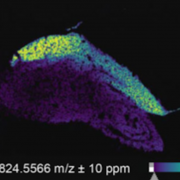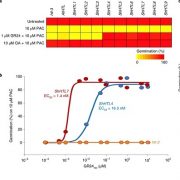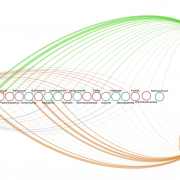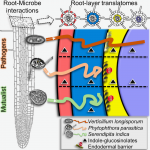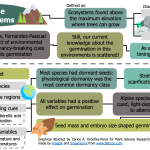Distribution of seed dormancy classes across a fire-prone continent: effects of rainfall seasonality and temperature (Ann. Bot.)
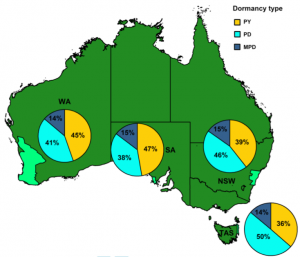 Seed dormancy controls germination so that it occurs under the most suitable conditions. Different dormancy classes achieve this by allowing germination in response to distinct environmental cues. In fire-prone ecosystems, species with physically dormant (PY) seeds benefit from fire since it breaks their impermeable seed coat. In contrast, those with physiological dormancy (PD) respond to alternate temperatures and smoke found in burnt sites. Therefore, these classes are expected to be subject to different selective pressures. In this exciting research, Colette and Ooi assess how the variation in the dormancy classes’ relative frequency is correlated with regional environmental factors in temperate Australian shrublands. A dataset from nearly 4000 plant species from four states was assembled. Overall, dormant seeds were more frequent in warmer environments. Still, different responses were found when analyzing PY and PD separately. While PD was more likely in aseasonal climates with cooler temperatures, PY was unrelated to temperature but more likely in highly seasonal climates. As a result, this paper provides fascinating insights into how climatic variables shape a dormancy class’s prevalence. (Summary by Carlos A. Ordóñez-Parra @caordonezparra) Ann. Bot. 10.1093/aob/mcaa203
Seed dormancy controls germination so that it occurs under the most suitable conditions. Different dormancy classes achieve this by allowing germination in response to distinct environmental cues. In fire-prone ecosystems, species with physically dormant (PY) seeds benefit from fire since it breaks their impermeable seed coat. In contrast, those with physiological dormancy (PD) respond to alternate temperatures and smoke found in burnt sites. Therefore, these classes are expected to be subject to different selective pressures. In this exciting research, Colette and Ooi assess how the variation in the dormancy classes’ relative frequency is correlated with regional environmental factors in temperate Australian shrublands. A dataset from nearly 4000 plant species from four states was assembled. Overall, dormant seeds were more frequent in warmer environments. Still, different responses were found when analyzing PY and PD separately. While PD was more likely in aseasonal climates with cooler temperatures, PY was unrelated to temperature but more likely in highly seasonal climates. As a result, this paper provides fascinating insights into how climatic variables shape a dormancy class’s prevalence. (Summary by Carlos A. Ordóñez-Parra @caordonezparra) Ann. Bot. 10.1093/aob/mcaa203


